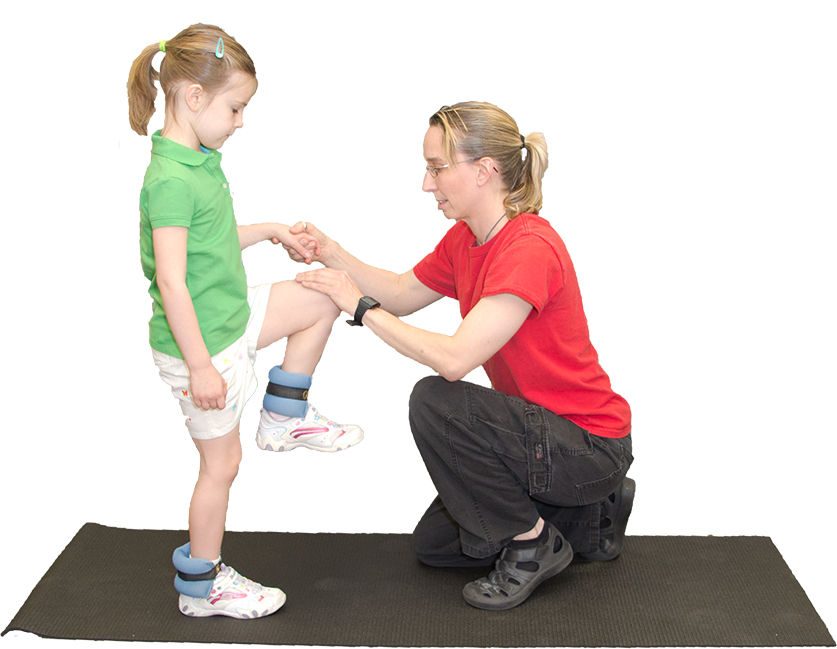Hip Flexion Standing
- Amy E Sturkey, PT
- Mar 5, 2017
- 1 min read
Pelvis disassociation is almost always tricky with my clients with quadriplegic or diplegic cerebral palsy, so this is a great exercise to encourage it. This exercise technically works hip flexion on one leg with hip extension on the other leg reciprocally and alternating. I always find a target (in this case my hand) to help a client to know how high you are expecting her knees to elevate. I have an electric piano that is always popular to bring the knees up to hit. I could have had the model touch her own hands, but I find the client tends to progressively lower her own hands to the knees instead of raise her knees to the hands. You can add weight to the ankles to add more resistance. To challenge balance provide less or no upper extremity support and ask the client to hold end range hip flexion for a specified amount of time. Document the weight used, the angle of hip flexion achieved, the support provided and the repetitions, and the duration of end range hip flexion performed.


















Comments